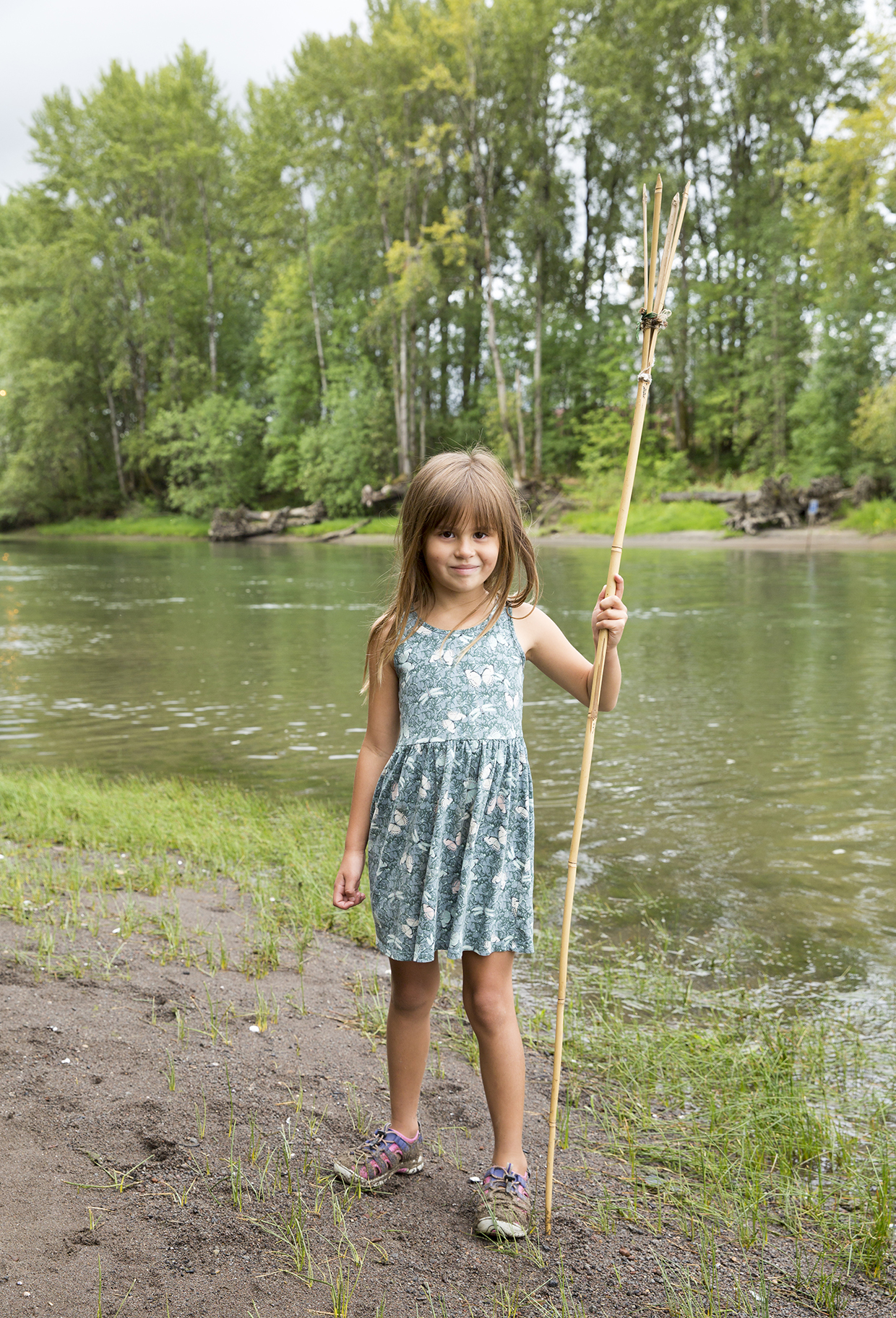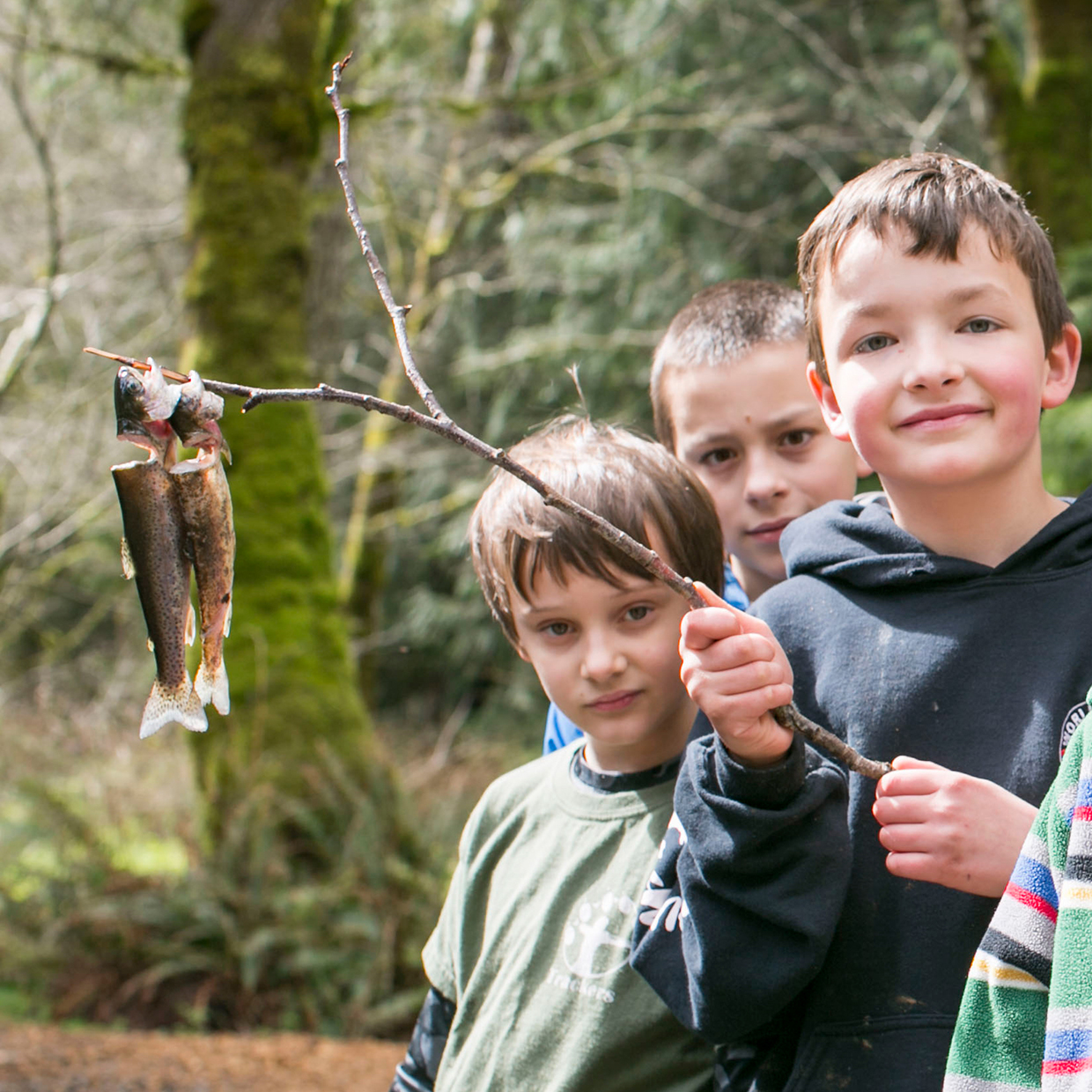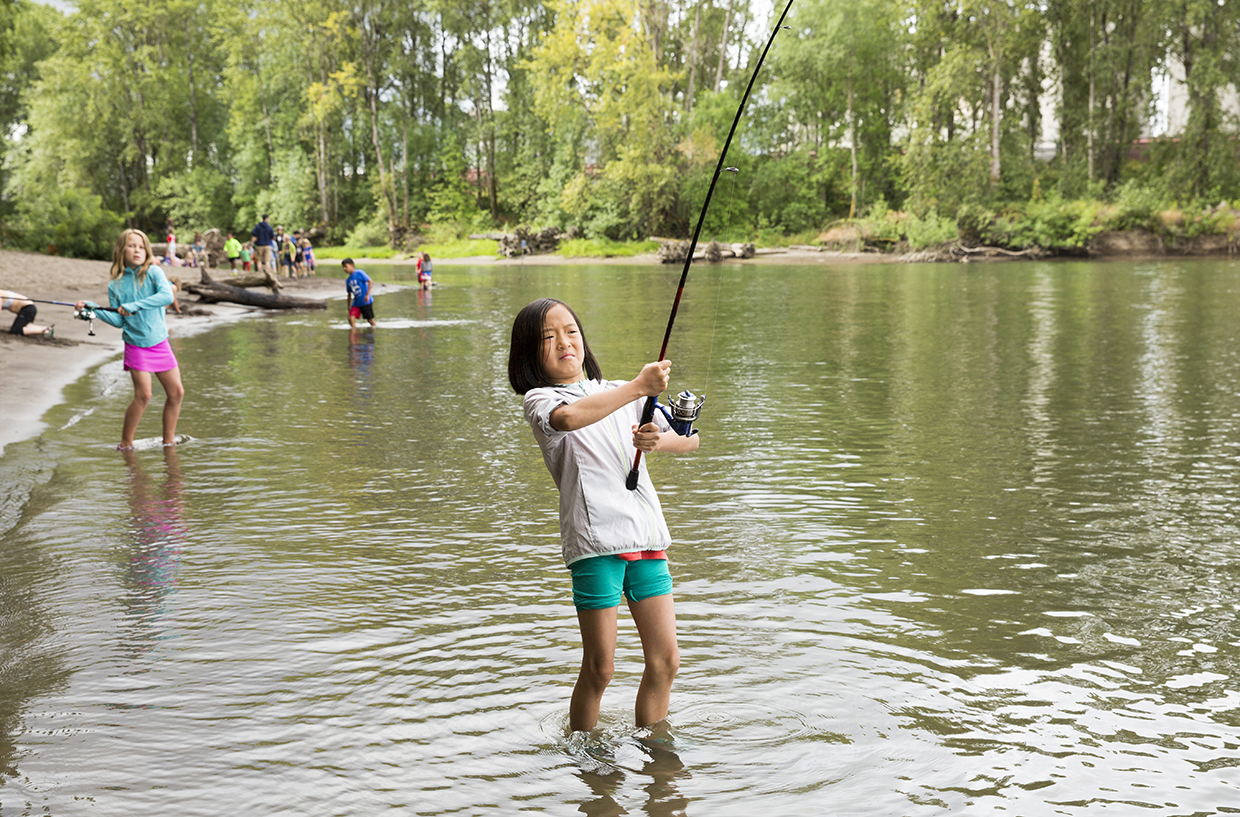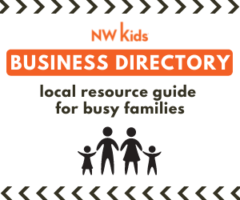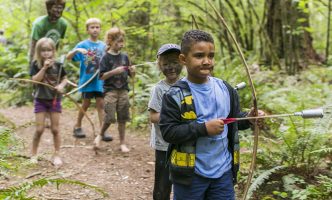
Outdoor education merges old school knowledge and new school applications
Outdoor Old School
Three kids meet in the open woods behind their neighborhood. One of them brings fishing line and hooks. They spend a few minutes digging for worms, which they put in a dirt-filled milk carton. The trio wanders down to the pond and to cut down willow saplings with their knives for poles. Fish see and hear what’s happening on land, so the kids approach the water slowly and silently. They mostly sit stone-still with hooks in the water or roll up their pants to wade out where they can cast to other areas. Because they’re silent, a deer ignores them while browsing the opposite shore. Other times they break rocks so loudly that Steller’s jays scold them from the treetops.
By afternoon they feel hungry. One kid eats a worm on a dare and another tells him he could die because raw earthworms carry flukes. No one dies. Later, one kid actually catches a fish. She guts it while the others build a cooking campfire. They cook and eat their fish. Everyone takes turns goading each other to eat the eyeballs. It’s just after sunset when the three return home.
Outdoor New School
A class of 23 children and their teacher walk down to the pond. They spend the morning taking pH and dissolved oxygen samples from the water. They put on neoprene waders and net quite a few invertebrates, placing the different samples in ice cube trays. Each species is identified with field guides and a smartphone app. Before lunch they’re assigned Sit Spots by their teacher, where they wait by the water’s edge to journal. A child struggles with sitting still and throws rocks in the water. A Stellar’s jay scolds her from the treetops. The teacher kindly and calmly tells her that rock-throwing is disruptive to other students.
At 11:56 AM they eat the lunches packed by their parents. In the afternoon they take a forest hike, learning about the ethnobotanical uses of native plants. One child wants to pick and eat oxalis, but they’re told not to due to food regulations. In the evening they sit by the campfire as counselors lead them in song.
These two stories represent different ends of the outdoor learning spectrum. Old school is visceral, while new school can often be abstract. Old outdoor school is intuitive, while new school prioritizes national standards.
Freedom found in nature and the wilderness is an endangered species. Can you imagine our trio of kids from the first story wandering around Portland Parks in a loose pack? Of course not. Our urban public lands are often burdened by a large population. Our teachers are constrained by the requirements of standardized tests often disconnected from nature. Thus, outdoor education has understandably evolved with that urbanization and newer academic standards. This is a challenge all outdoor educators face.
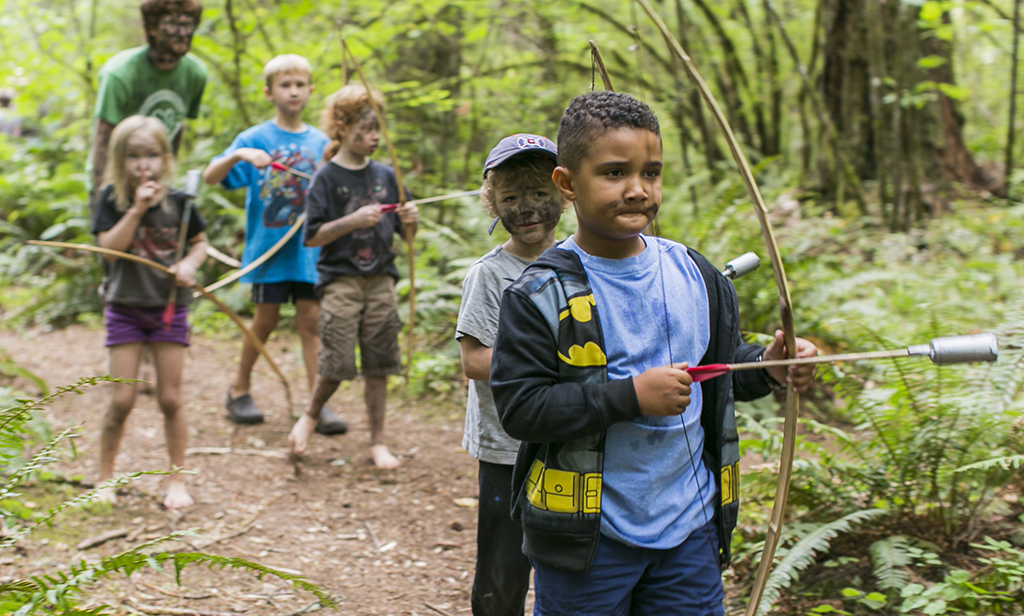
Outdoor Possible School
Many outdoor educators have not personally experienced connection to nature that goes beyond observation. When teachers were themselves children, maybe they were told that picking wild plants will damage habitat, that a campfire is unequivocally dangerous to the forest, or that hunting any animal is wrong.
Yet harvesting willow to make a basket need not decimate all the willow along the pond’s edge. With proper cutting technique (called coppicing) you actually facilitate more understory and shrubby growth which increases habitat for wildlife. Collecting wood for a campfire during winter reduces the woody debris of an area and mitigates fire danger during the summer months. Catching and eating bullfrogs (yum, fried frog legs) helps eliminate this invasive species from our ecosystem, protecting many native creatures.
A new perspective of outdoor education honors the value of old school as well as the healthy limits of the new school. Outdoor education has more potential than just supplementing conventional academics. True wilderness experiences teach autonomy, resiliency, and a powerful sensory awareness. Through this understanding, we can create a model of learning where we don’t simply observe nature, but we connect with and care for it.
The freedom, skills and stories of traditional outdoor lore still have a place in the education of our children. We can forge new outdoor schools that honor ancient ways of learning. We can cultivate land where a child finds food by tending to the wilderness as a garden, crafts clothing from what they gather, or builds shelter from the nearby trees. And we can rediscover a place where three kids, during a lazy day at the pond, learn from the fish and the waters they call home.
